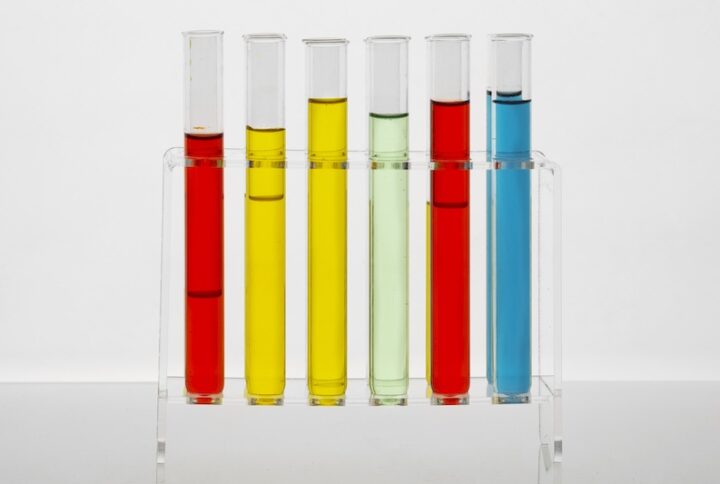Chromatography is a powerful separation technique used to isolate mixtures of soluble substances, often involving coloured compounds like food colourings, inks, dyes, or plant pigments. The process produces a chromatogram, a visual representation of the separated components. By analysing the chromatogram, valuable insights can be drawn about the pigments present in the mixture, revealing their unique characteristics and composition.
Chromatography is a vital technique used in various fields, including pharmaceuticals, forensics, and environmental science. It helps purify research chemicals by isolating specific drugs or bioactive compounds. Also, it is essential for analysing complex mixtures, allowing scientists to precisely identify and quantify different chemical components.
Now we understand what chromatography is and where it’s used, let’s discuss how it works and why it’s important for your chemicals’ safety and purity.
How does Chromatography work?
Although there are many forms of chromatography, they all operate in the same way and have the same phases (a phase is a distinct medium through which the sample moves or interacts). All the different types feature a stationary phase (usually a solid) and a mobile phase that carries these complex mixtures through the stationary phase (usually a gas or liquid).
As each component in the mixture travels through the chromatographic system, it partitions between the stationary and mobile phases based on its unique chemical properties. Those components interacting more strongly with the stationary phase move more slowly, while those favouring the mobile phase travel faster. This affinity difference leads to the mixture’s separation into its individual components. The time it takes each component to pass through the system and reach the detector is called its retention time, which is crucial for identifying and quantifying each component.
Interpreting Chromatography Results
In chromatography, the position of spots on the stationary phase (such as paper or a TLC plate) is directly related to the speed at which compounds travel through the mobile phase. Compounds that interact more strongly with the stationary phase move slowly and appear closer to the starting point, while those with weaker interactions travel faster and appear further along the chromatogram. This difference in speed is influenced by factors such as polarity, molecular size, and solubility in the mobile phase.
Use of Chromatography in Pharmaceutical Quality Control
Chromatography plays a crucial role in pharmaceutical quality control by ensuring drug purity, potency, and safety. It is used to analyse raw materials, detect impurities, and confirm the composition of finished pharmaceutical products. Techniques like high-performance liquid chromatography (HPLC) and gas chromatography (GC) help identify and quantify active ingredients, degradation products, and contaminants. This ensures compliance with regulatory standards, enhances drug efficacy, and prevents harmful substances from reaching consumers.
Throughout this blog, we have explored the principles of chromatography, its working mechanism, and how to interpret its results. Mastering this technique is essential for pharmaceutical quality control, ensuring drug purity, and maintaining high safety standards. By understanding chromatography, scientists can accurately analyse chemical compositions, detect impurities, and uphold the quality of pharmaceutical products.

